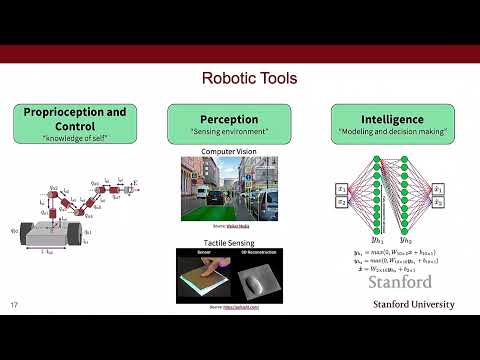Description:
Explore the future of human-robot collaboration in this Stanford seminar presented by Monroe Kennedy III, Assistant Professor of Mechanical Engineering and Computer Science. Delve into the evolution of robotics, from automated manufacturing tasks to autonomous navigation in unstructured environments and swarm robotics. Discover the unique challenges posed by human-robot collaboration in human-configured environments, including the need for contextual understanding and effective teamwork. Learn about key features of successful collaboration, motion planning, perception, wrench space, and intelligence algorithms. Examine real-world examples, such as intelligent prosthetic arm projects and augmented reality applications, to understand the practical implications of human-robot interaction. Gain insights into the tools, key challenges, and future directions of this exciting field, including the role of sensors and dense action in advancing collaborative robotics.

Considerations for Human-Robot Collaboration
Add to list
#Engineering
#Robotics
#Computer Science
#Artificial Intelligence
#Programming
#Mobile Development
#Augmented Reality
#Personal Development
#Communication Skills
#Teamwork